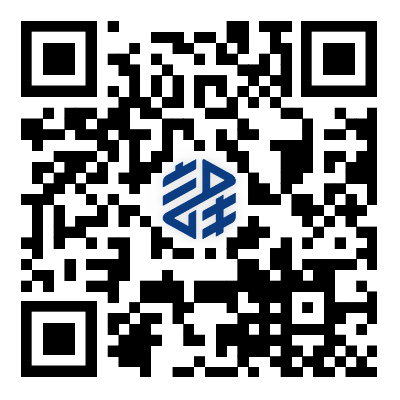2、中医药特点
2. Characteristics of TCM
在数千年的发展过程中,中医药不断吸收和融合各个时期先进的科学技术和人文思想,不断创新发展,理论体系日趋完善,技术方法更加丰富,形成了鲜明的特点。
During its course of development spanning a couple of millennia, TCM has kept drawing and assimilating advanced elements of natural science and humanities. Through many innovations, its theoretical base covered more ground and its remedies against various diseases expanded, displaying unique characteristics.
第一,重视整体。中医认为人与自然、人与社会是一个相互联系、不可分割的统一体,人体内部也是一个有机的整体。重视自然环境和社会环境对健康与疾病的影响,认为精神与形体密不可分,强调生理和心理的协同关系,重视生理与心理在健康与疾病中的相互影响。
First, setting great store by the holistic view. TCM deems that the relationship between humans and nature is an interactive and inseparable whole, as are the relationships between humans and the society, and between the internal organs of the human body, so it values the impacts of natural and social environment on health and illness. Moreover, it believes that the mind and body are closely connected, emphasizing the coordination of physical and mental factors and their interactions in the conditions of health and illness.
第二,注重“平”与“和”。中医强调和谐对健康具有重要作用,认为人的健康在于各脏腑功能和谐协调,情志表达适度中和,并能顺应不同环境的变化,其根本在于阴阳的动态平衡。疾病的发生,其根本是在内、外因素作用下,人的整体功能失去动态平衡。维护健康就是维护人的整体功能动态平衡,治疗疾病就是使失去动态平衡的整体功能恢复到协调与和谐状态。
Second, setting great store by the principle of harmony. TCM lays particular stress on the importance of harmony on health, holding that a person’s physical health depends on harmony in the functions of the various body organs, the moderate status of the emotional expression, and adaption and compliance to different environments, of which the most vital is the dynamic balance between yin and yang. The fundamental reason for illness is that various internal and external factors disturb the dynamic balance. Therefore, maintaining health actually means conserving the dynamic balance of body functions, and curing diseases means restoring chaotic body functions to a state of coordination and harmony.
第三,强调个体化。中医诊疗强调因人、因时、因地制宜,体现为“辨证论治”。“辨证”,就是将四诊(望、闻、问、切)所采集的症状、体征等个体信息,通过分析、综合,判断为某种证候。“论治”,就是根据辨证结果确定相应治疗方法。中医诊疗着眼于“病的人”而不仅是“人的病”,着眼于调整致病因子作用于人体后整体功能失调的状态。
Third, emphasis on individuality. TCM treats a disease based on full consideration of the individual constitution, climatic and seasonal conditions, and environment. This is embodied in the term “giving treatment on the basis of syndrome differentiation.” Syndrome differentiation means diagnosing an illness as a certain syndrome on the basis of analyzing the specific symptoms and physical signs collected by way of inspection, auscultation & olfaction, inquiry, and palpation, while giving treatment means defining the treatment approach in line with the syndrome differentiated. TCM therapies focus on the person who is sick rather than the illness that the patient contracts, i.e., aiming to restore the harmonious state of body functions that is disrupted by pathogenic factors.
第四,突出“治未病”。中医“治未病”核心体现在“预防为主”,重在“未病先防、既病防变、瘥后防复”。中医强调生活方式和健康有着密切关系,主张以养生为要务,认为可通过情志调摄、劳逸适度、膳食合理、起居有常等,也可根据不同体质或状态给予适当干预,以养神健体,培育正气,提高抗邪能力,从而达到保健和防病作用。
Fourth, emphasis on preventative treatment. Preventative treatment is a core belief of TCM, which lays great emphasis on prevention before a disease arises, guarding against pathological changes when falling sick, and protecting recovering patients from relapse. TCM believes that lifestyle is closely related to health, so it advocates health should be preserved in daily life. TCM thinks that a person’s health can be improved through emotional adjustment, balanced labor and rest, a sensible diet, and a regular life, or through appropriate intervention in the lifestyle based on people’s specific physical conditions. By these means, people can cultivate vital energy to protect themselves from harm and keep healthy.
第五,使用简便。中医诊断主要由医生自主通过望、闻、问、切等方法收集患者资料,不依赖于各种复杂的仪器设备。中医干预既有药物,也有针灸、推拿、拔罐、刮痧等非药物疗法。许多非药物疗法不需要复杂器具,其所需器具(如小夹板、刮痧板、火罐等)往往可以就地取材,易于推广使用。
Fifth, simplicity. TCM doctors diagnose patients through inspection, auscultation & olfaction, inquiry, and palpation. In addition to medication, TCM has many non-pharmacological alternative approaches such as acupuncture and moxibustion, tuina (massage), cupping and guasha (spooning). There is no need for complex equipment. TCM tools, for example, the small splints used in Chinese osteopathy, the spoons used in guasha, or the cups used in cupping therapy, can draw from materials close at hand, so that such treatments can spread easily.










